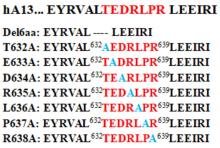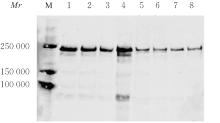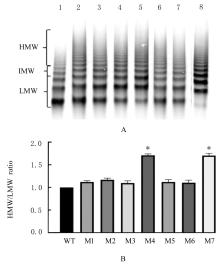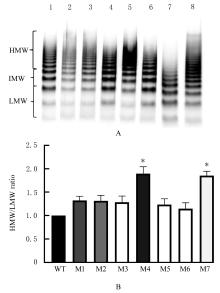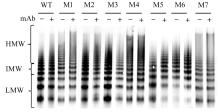| 1 |
FIDALGO T, MARTINHO P, PINTO C S, et al. Combined study of ADAMTS13 and complement genes in the diagnosis of thrombotic microangiopathies using next-generation sequencing[J]. Res Pract Thromb Haemost, 2017, 1(1): 69-80.
|
| 2 |
XIE X T, XIAO Y Y, ZHANG Y, et al. Combination regimens containing daratumumab for initial diagnosed acquired thrombotic thrombocytopenic purpura[J]. J Thromb Thrombolysis, 2023, 55(2): 399-405.
|
| 3 |
ERCIG B, ARFMAN T, HRDINOVA J, et al. Conformational plasticity of ADAMTS13 in hemostasis and autoimmunity[J]. J Biol Chem, 2021, 297(4): 101132.
|
| 4 |
TAYLOR A, VENDRAMIN C, OOSTERHOLT S, et al. Pharmacokinetics of plasma infusion in congenital thrombotic thrombocytopenic purpura[J]. J Thromb Haemost, 2019, 17(1): 88-98.
|
| 5 |
THOMPSON G L, KAVANAGH D. Diagnosis and treatment of thrombotic microangiopathy[J]. Int J Lab Hematol, 2022, 44(): 101-113.
|
| 6 |
ROOSE E, SCHELPE A S, TELLIER E, et al. Open ADAMTS13, induced by antibodies, is a biomarker for subclinical immune-mediated thrombotic thrombocytopenic purpura[J]. Blood, 2020, 136(3): 353-361.
|
| 7 |
SCULLY M. TTP: an open and shut (closed) case[J]. Blood, 2020, 136(3): 265-266.
|
| 8 |
ZHENG X L, WU H M, SHANG D Z, et al. Multiple domains of ADAMTS13 are targeted by autoantibodies against ADAMTS13 in patients with acquired idiopathic thrombotic thrombocytopenic purpura[J]. Haematologica, 2010, 95(9): 1555-1562.
|
| 9 |
THOMAS M R, GROOT R D, SCULLY M A, et al. Pathogenicity of anti-ADAMTS13 autoantibodies in acquired thrombotic thrombocytopenic purpura[J]. EBioMedicine, 2015, 2(8): 942-952.
|
| 10 |
WAELE L D, CURIE A, KANGRO K, et al. Anti-cysteine/spacer antibodies that open ADAMTS13 are a common feature in iTTP[J]. Blood Adv, 2021, 5(21): 4480-4484.
|
| 11 |
JIN S Y, SKIPWITH C G, ZHENG X L. Amino acid residues Arg(659), Arg(660), and Tyr(661) in the spacer domain of ADAMTS13 are critical for cleavage of von Willebrand factor[J]. Blood, 2010, 115(11): 2300-2310.
|
| 12 |
XIE X T, XIAO Y Y, ZHANG Y, et al. Combination regimens containing daratumumab for initial diagnosed acquired thrombotic thrombocytopenic purpura[J]. J Thromb Thrombolysis, 2023, 55(2): 399-405.
|
| 13 |
HALKIDIS K, ZHENG X L. ADAMTS13 conformations and mechanism of inhibition in immune thrombotic thrombocytopenic purpura[J]. J Thromb Haemost, 2022, 20(10): 2197-2203.
|
| 14 |
PLAUTZ W E, RAVAL J S, DYER M R, et al. ADAMTS13: origins, applications, and prospects[J]. Transfusion, 2018, 58(10): 2453-2462.
|
| 15 |
吴 昊, 李 华, 苏 畅, 等. 血管性血友病因子裂解酶CysR结构域生物学功能的研究[J]. 中国实验血液学杂志, 2021, 29(3): 893-900.
|
| 16 |
AI J H, SMITH P, WANG S W, et al. The proximal carboxyl-terminal domains of ADAMTS13 determine substrate specificity and are all required for cleavage of von Willebrand factor[J]. J Biol Chem, 2005, 280(33): 29428-29434.
|
| 17 |
SELVAKUMAR S, LIU A, CHATURVEDI S. Immune thrombotic thrombocytopenic purpura: spotlight on long-term outcomes and survivorship[J]. Front Med, 2023, 10: 1137019.
|
| 18 |
彭 一, 张 榕. 药物相关血栓性微血管病的发病机制与诊治[J]. 中国实用内科杂志, 2023, 43(6): 457-460.
|
| 19 |
SCHIEPPATI F, RUSSO L, MARCHETTI M, et al. Low levels of ADAMTS-13 with high anti-ADAMTS-13 antibodies during remission of immune-mediated thrombotic thrombocytopenic purpura highly predict for disease relapse: a multi-institutional study[J]. Am J Hematol, 2020, 95(8): 953-959.
|
| 20 |
李树君, 金圣宇. 血管性血友病因子裂解酶在血栓性血小板减少性紫癜中的作用研究进展[J]. 延边大学医学学报, 2022, 45(1): 55-59.
|
| 21 |
COLONNE C K, FAVALORO E J, PASALIC L. The intriguing connections between von willebrand factor, ADAMTS13 and cancer[J]. Healthcare, 2022, 10(3): 557.
|
 )
)
